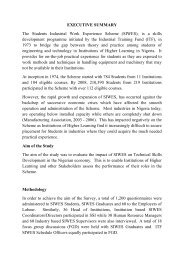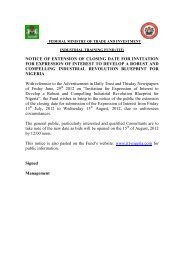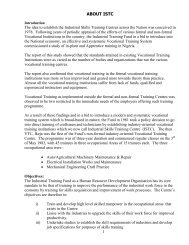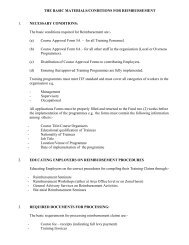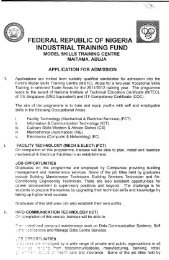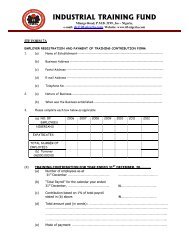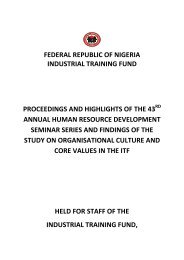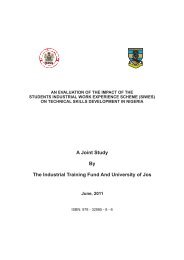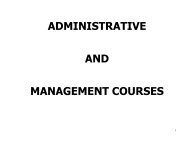table of contents - ITF Nigeria
table of contents - ITF Nigeria
table of contents - ITF Nigeria
You also want an ePaper? Increase the reach of your titles
YUMPU automatically turns print PDFs into web optimized ePapers that Google loves.
corroborates this view when he submits that while resources could appear to be<br />
the immediate problem in the sector, yet the real threat in <strong>Nigeria</strong> may well be<br />
lack <strong>of</strong> good management and production skills, inept societal goodwill and<br />
Government’s ambivalence regarding the actual value <strong>of</strong> the sector in the<br />
economy. It is expected, therefore, that with better exposition through appraisal<br />
<strong>of</strong> Skills-Gap, it would be better appreciated the ways through which<br />
performances in the FB&T Sector could be drastically improved upon.<br />
Finally, these have great implications for <strong>ITF</strong>’s role in Human Resource<br />
Development in <strong>Nigeria</strong>. There is therefore, a need for training agencies like the<br />
<strong>ITF</strong> to intensify collection <strong>of</strong> all useful and valid information about Skills-Gap,<br />
disseminate such information to all stakeholders in the society and carry out<br />
enlightenment and training programmes which are tailor–made to redress issues<br />
<strong>of</strong> Skills-Gap.<br />
CHAPTER THREE<br />
METHODS AND PROCEDURES<br />
This chapter deals with methods employed in carrying out the study. It is<br />
discussed under the following sub-headings: research design, population and<br />
42



